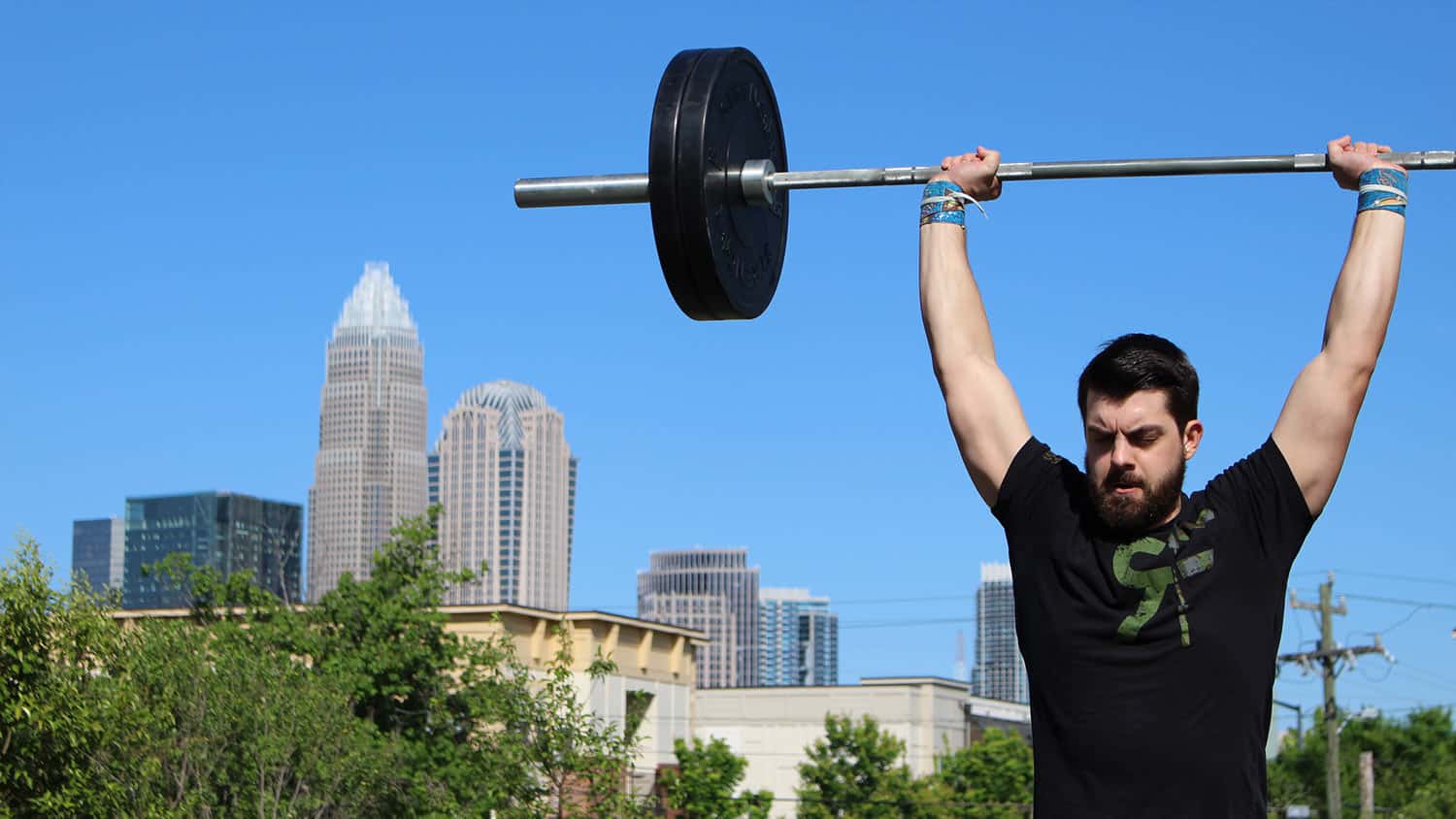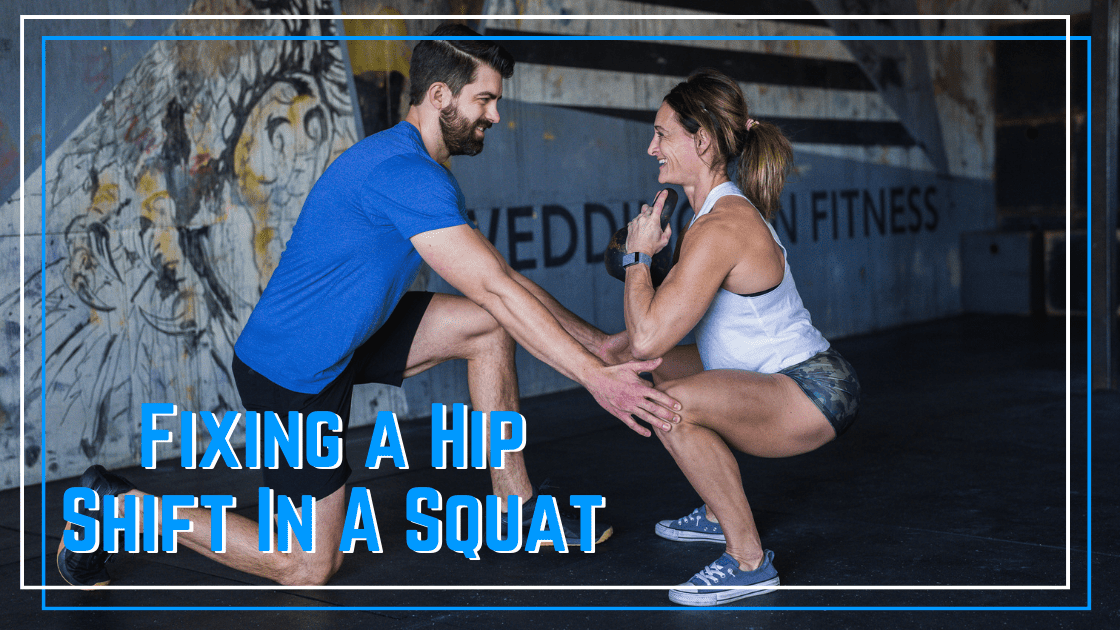
How to Fix a Hip Shift in a Squat

Many athletes have a hip shift during their squats where they shift their body weight towards one side during the lift. This can often be a difficult and frustrating issue to resolve. In this video, we’ll break down how to fix a hip shift during squats by examining how pain, strength, and mobility can all contribute to this issue.
Many hip shifts during squats come from mobility deficits on one side of the body. See our Ultimate Mobility Checklist for more detailed assessments of your mobility.
Hip Shift in a Squat Review
Hey everyone, Zach and Pamela from PerformancePlusProgramming.com and today, we’re talking about fixing a hip shift during a squat. So if your squat looks like this, you’re going to want to take a look at the tips that we have for you. So notice how Pamela just squats down. You’re gonna see that the barbell is uneven, and her hips are clearly shifting towards the left side. We want to fix that hip shift, which can happen for a couple of different reasons.
The most common reason that I see, as a physical therapist, is individuals that are in pain. A lot of times your brain will want to protect you from that pain, so it will force you to shift to the side. You might not even notice that it’s happening. You might not even notice if your training partner pointed it out or if you look at a video of yourself, but it is often very hard to change a pain-derived hip shift in the spot until we actually address the pain.
So we need to get irritated tissues to calm down, and then often, you will see that hip shift correct itself. If you’re in a situation where you’re not in pain, you’ve rehabbed that already, but you’re still experiencing a hip shift, then there are two general categories from which we tend to see a hip shift come.
Strength Deficits
The first is a strength-derived hip shift. We see this a lot.
Here’s a case example of one athlete that I treated recently. The athlete had a giant hip shift in his squat. But the important thing to note in that individual squat was that it only happens when he approaches maximal loading. When he was a lighter weight, that hip shift didn’t exist.
What that would indicate, if you’re in that situation, is it is not a mobility limitation. Mobility doesn’t care if it’s a lightweight or a heavyweight, but strength imbalances will. So essentially, this individual is getting up to a weight that overloaded his relatively weak quad strength on one side, and he ended up shifting his weight away from that side as he came out of the squad.
So that’s why when you see him stand up, he has that clear shift to the side because he tries to get the quad out of the way and then stand up. It’s essentially what we call a good morning squat pattern, but it is only happening on one side. So again, if it changes as more weight is put on board, it’s probably not mobility. It is probably strength, and we need to decide where we are lacking strength in terms of quads or lower back, and we need to start building that up.
See this podcast for more details on diagnosing squat weaknesses.
Mobility Deficits Leading to a Hip Shift
If you have a hip shift, almost no matter what weight on the bar or what spot variation you’re doing, we need to address your squat mobility. So we will look at the range of motion of the ankles and hips.
Ankle Mobility
Limited ankle mobility can lead to compensatory movements, including hip shifts during squats.
To test your ankle mobility, follow these steps:
- Stand in front of a wall or a sturdy box.
- Place your big toe one hand width away from the wall or box.
- With your heel on the ground, try to touch your knee to the wall or box while keeping your heel down.
Hip Mobility
We are also going to look at hip joint mobility. To test that, I will have Pamela lie on her back. This is better done with a partner than by yourself, and we will look at her hip rotation on each side. So I will bend this leg up so that her knee is directly over her hip, and I will simply bring her leg in while maintaining that knee-over-hip position.
I will look at how much hip external rotation of her hip she has and how much hip internal rotation she has. And we will look at that on both sides and compare on both sides. And very often, you’ll notice that one of those hips has more or less one of those angles, and working on your mobility specifically to which is different and asymmetrical side to side will also often help correct that hip shift in the squat.
Hip Shift in a Squat Review
So, address pain, address any strength deficits, and then start looking at your mobility. When you run those tests, if you find any of those issues, check out the different programs we offer at performanceplusprogramming.com.
Everything from strength isolation programs to build up your quads, to build up your glutes, as well as mobility programs to address the hip mobility limitations that you may have found. Or the ankle mobility limitations and use those to help correct your hip shift.




